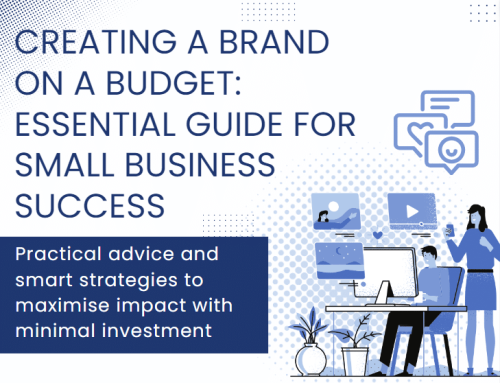Google’s core algorithm updates and how they affect your business website ranking
In 2002, business directories in Australia such as the Yellow Pages turned over about $800M. That was a massive chunk of Telstra’s bottom line at the time and about 10% of an estimated $8.9b Australian ad market. They even inspired a crude form of search optimisation: start your business name with an A or even AAA and you were more likely to appear up top of your preferred category.
20 years later, internet search has eaten those directories for breakfast. Google now handles an estimated 2 trillion searches per year. Google regularly releases updates to its algorithm to help searchers – who are Google’s clients – find what they’re looking for.
Why does that matter to your business? I’ll explain but first let me provide some context…
The Google Algorithm and Search Engine Optimisation
Google is focused on its ability to map internet content to search query intent. What that means, is that Google is always trying to improve the match rate between what you’re looking for and all the content on the internet. To do that, Google makes changes to the algorithm that generates those results. Over the last few years Google has invested significantly in enhancing the user experience. Those changes have literally been to figure out how we speak and understand our natural language.
As a result, consumers trust Google and rely on it almost exclusively. However, when Google implements changes to its algorithm, this impact where your website ranks in the search results. That can be very frustrating, particularly if your business gets a lot of leads from Google. In some cases, sites that were ranking highly can drop significantly. That results in drop offs in website traffic, which can then mean reduced enquiries, leads, and sales.
Here at Tenfold Business Coaching, we know that many business owners are focusing on the most important aspects of running a business. Winning the right customers and getting pricing right so you make money on the work you do. Recruiting and leading good teams. Doing quality work to secure repeat business. Managing your time so you can plan for your business’s big picture. With all that to work on, many Australian business owners don’t have time to be experts in how Google works.
I get it. Now let me explain why it’s good to have a basic handle on the Google algorithm:
- Consumers trust that Google is providing the best options to them
- If your website ranks highly on Google, people see your business as a trusted authority. In fact, 75% of people never click past the first page, and 55% of clicks go to the top 3 results.
- High rank = more people to your website = more enquiries = more sales
Ok, so what does that mean in dollars to your business? Moving from 6th place up to 3rd place increases your sales by a multiple of x2.5! (That’s bankable sales, not just visitors or enquiries). Check out this related article: Managing your SEO like a Pro: how taking the wheel protects your investment
What to do about it? Turbo-charge your SEO!
Google recommends there are a few things you should be doing, but if you don’t have time to devour the almost 200 pages from the search quality raters guidelines, focus on E.A.T. which stands for Expertise, Authoritativeness and Trustworthiness.
Do not panic – If you notice that your website has suddenly lost traffic, it’s a fairly normal human response to panic. However, realise that this isn’t the end of the world, or your business, and you need to make a plan to improve your content. These core updates aren’t about specific types of content or even websites, these changes are because of how Google’s systems have been improved to better assess content overall and better address user expectations.
There are a few things you can do to make sure Google Search is able to read your site better and give your visitors what they’re after. The company makes available a lot of information about the technical aspects of SEO, but here are a few of the easiest things you can do to get started:
Make sure you think about your customer
When creating content on your website, your focus should be on creating high-quality, relevant content. Don’t stuff pages full of keywords with the hope they will show up in search results. Think about the customer experience in terms of what they are looking for and what questions you are answering for them. Instead of trying to convince Google that you are the best answer by stuffing in keywords everywhere on your site, just focus on providing the best answer to your users and leave the rest to Google.
Google has also implemented improvements via an automated system to help people find better product reviews through Google Search. This system determines if a review goes beyond just sharing basic information, and instead, demonstrates expertise or in-depth research.
Make sure your site is optimised for mobile
We all know how the story goes… At the Macworld Expo in 2007, Steve Jobs promised the world three things: “A widescreen iPod with touch controls, a revolutionary mobile phone and a breakthrough internet communications device”. During the big reveal, much to the crowd’s astonishment, he didn’t unveil three products, instead, he held out one: the iPhone.
Today, there are more than 3 billion people with a smartphone compared to almost 1.3b with a laptop/desktop computer. In fact, 2015 was the year that internet searches using mobile surpassed those from desktop, which means: if your website isn’t optimised for mobile, you’re missing out as 53% internet users worldwide operate mobile and tablet devices.
I advise my business coaching clients to making sure to provide helpful information in an uncluttered way. The easier it is for a user to find and understand your info using their mobile device, the better their experience. That will be reflected in the way Google evaluates and rates your site. Where there are many possible matches, Google gives preference to those sites that perform better on mobile devices.
Make sure your site is optimised for load time
Less is more when it comes to mobile. Ultimately, the best design strategy is simple: ‘design for small’. If the page takes too long to load, visitors won’t wait. They’ll leave before they even get to see what you’re offering. Google considers this a major drawback. In fact, it is now one of the major factors in how Google decides to rank your site. The ranking algorithm applies a penalty for slow loading sites.
Image optimisation
Since the ratio of picture file vs text file content can be up to 1000:1 on your website one of the biggest drains on load times is having images that aren’t optimised for online viewing. Straightforward tactics such as image compression to remove the metadata behind images and size reduction can have a big impact.
Create a ‘Native Experience’
Tailoring a page for a mobile device increases overall usability which can drive conversion rates. The two design principals that can be followed are Responsive, a design that shifts the layout of the site based on the screen size it’s being shown on and Adaptive, a design that completely changes based on the screen size.
Accelerated Mobile Pages (AMP)
Accelerated Mobile Pages uses specialised code to deliver lightweight pages that load up to 4 times faster than those without. They do it by adjusting according to which platform the website is being viewed on. Google is currently pushing AMP to be applied in all websites and these are given priority in search engine results pages, the improved page loading performance, smoother user experience results in more clicks, better brand impressions and ultimately more conversions.
Claim your Google business profile
‘Google My Business’ is a free and useful tool to help your business show up in search engine results pages and help your visitors find what they’re looking for. By creating a profile, you’re providing Google with information about who your customers are and what you do, making it easier for customers to contact you.
The wrap up
At the end of the day, search engines are serving visitors with the best content they can find. Knowing this gives you a flying start. Producing unique, well-written content people want to EAT (remember: Expertise, Authoritativeness and Trustworthiness) that’s specifically geared towards your target market will have your organic website ranking up in the top 3 where it needs to be!
PS If you want more help in applying these tactics to your website, call Tenfold Business Coaching, Australia’s best business coaches. One of us can give you practical advice to improve your ranking and grow your business. Chat soon!
Table of Contents
- The Google Algorithm and Search Engine Optimisation
- What to do about it? Turbo-charge your SEO!
- Make sure you think about your customer
- Make sure your site is optimised for mobile
- Make sure your site is optimised for load time
- Image optimisation
- Create a ‘Native Experience’
- Accelerated Mobile Pages (AMP)
- Claim your Google business profile
- The wrap up



